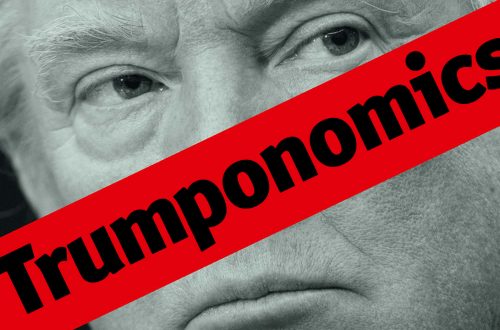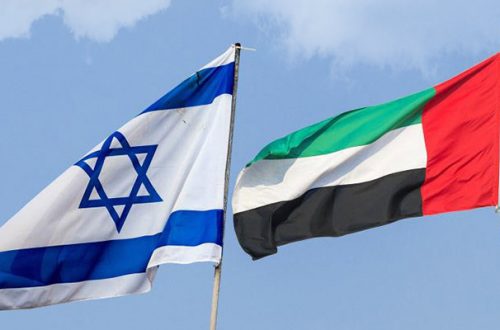After taking in his article (below this one), I have to say that The Hasbara Buster is one of the sloppiest historians I have ever encountered.
If his grasp of South African history is as shonky as his grasp of Israel’s history, it is little wonder that this stretched and laboured ‘apartheid’ analogy falls so flat. His bubblegum wrapper master-class in South African history gets it wrong from the get go.
I’d like to deal with some substantive errors, so let’s dispense with those nickpicking points first and get them out of the way. HB says:
“The Afrikaners began to settle in South Africa in the 18th century, fleeing religious persecution in Europe.”
Well, to begin with, the “Afrikaners” were an amalgamation of people both from several European sources and indigenous people, blended and created in Africa. The Afrikaner identity was created in Africa in the same way the Mexican identity was created in North America. It did not “settle” in Africa from elsewhere. Indeed, the language “Afrikaans” only began to be formalised from the mid 1800s and only became an officially recognised language in 1925. The Dutch first settled the Cape in 1652, that is to say the 17th century, not the 18th, but what is a 100 years between friends? The Dutch were not fleeing religious persecution in Europe, they were seeking a convenient half-way colony between Holland and the Far East. HB is confusing these with the French Huguenots who arrived a generation later in the late 1680s.
Then he says:
“They established two prosperous states which created job opportunities for blacks, who began pouring in from adjacent areas.”
This is just laughable. The area that is now the Western Cape functioned as a colony for over 150 years! The indigenous people in this area were the Khoi and the San: not the “blacks”. The frontier encounters with the “black” African tribes – the Zulu and Xhosa – only came much later.
Indeed the “two prosperous states” is also a figment of his imagination. After The Cape colony was ceded to the British in 1814, the Boers – who had now lived in Africa for more than a century and a half, grew disenchanted with British rule and eventually – about 20 years later, that is – “trekked” away from The Cape, in search of land to settle. This was done, initially, not through conquest, but through making deals with African chiefs. The Natal colony was established around 1840 (see, we’re a long way away from 1652 now) and was soon annexed by the British. A year or two before that, the Orange Free State was founded, and a few years later – in 1845 – the Transvaal, or the Zuid Afrikaanse Rebpubliek.
But this is just by-the-by. Suffice it to say that none of the colonies was industrial or urban and they certainly did not “create job opportunities for blacks” who certainly did not begin “pouring in from adjacent areas” either. This is just rubbish. What happened next – as almost everybody knows – is that diamonds and gold were discovered, so Britain came swooping down and took over.
HB’s telescoping of more than 200 years of history into one event – placed in the wrong century is unsurprising. Nevertheless, let us not dwell on this. Let’s look at the modern history of South Africa, culminating with the struggle against Apartheid, which was introduced in 1948.
HB says, after the Boer Wars:
“When Afrikaners finally obtained independence, they understood that only a strong Afrikaner state would prevent further massacres.”
Again, this is laughable. The Union of South Africa, uniting the Cape, Natal and the two Boer Republics as a single country (but excluding what became Swaziland and Lesotho, which, though land-locked, remained African kingdoms under British protection) was formed in 1910, first as a self-governing dominion, and then as a commonwealth realm. The British monarch remained the head of State, and the Pound remained the currency. The first Prime Minister was Louis Botha, a former Boer General. Two world wars came and went under this arrangement. Botha’s successor was, you may recall, Jan Smuts, also a former Boer General but now a friend to Britain, and a founding father of the modern United Nations.
There was absolutely no question at all of “a strong Afrikaner state” being consolidated to prevent further British massacres! Indeed, the Union fought alongside Britain in both world wars. Even after the victory of the (Afrikaner) Nationalist Party in 1948, it wasn’t until 1961 that the now Republic of South Africa gained independence from Britain. That’s a 60 year gap between the end of the second Boer War and the formation of the RSA. That’s a long time. Israel is only 60 years old.
HB has shoehorned South African history into an equally distorted mould of Israeli history in order to make is twisted analogy.
But it doesn’t end there. The kak keeps coming.
He doesn’t really even grasp the nature of Apartheid. The system was premised on the idea that there were no black South Africans. Black people – so the legal theory went – were ‘citizens’ of various ‘homelands’. As such, they had no rights in South Africa-proper. There would be curfews and designated black areas where temporary labourers could live. Without a permit – a “dompas” – they were not permitted to be in white areas after curfew. Black areas had little infrastructure. Often there was no electricity and only basic running water. There would be strict separation of the races, down to the queue at the post office. In the US, black people sat at the back of the bus: in SA they had their own buses.
They certainly didn’t have a vote.
To claim that the status of an Arab Israeli is anything like this is an insult to the suffering of those who lived under Apartheid.
But the biggest insult comes when HB tries to equate the ANC with Hamas.
He claims Umkonto we Sizwe, the ANC’s armed wing “killed thousands”. Pure fantasy. In its thirty year existence only around 250 people died in its actions. It’s actions were chiefly targeted at military installations and it utterly rejected indiscriminate bombing which it decided were both unjust and counter-productive. One of the most notorious bombings – of the Magoo bar – was fiercely condemned internally. The bomber, Robert McBride had to apply for amnesty before the Truth & Reconciliation Committee along with the regime’s killers.
The biggest part of the ANC’s political programme was the establishment of a government-in-waiting. It’s leaders behaved in a statesmanlike fashion and produced a vision of a post-Apartheid society based on equality, non-racialism and justice. In fact, in 1955, the ANC published its guiding document – The Freedom Charter – which outlined this vision.
Only one group, the PAC (Pan African Congress) spoke of driving whites into the sea and had a notorious slogan, “One Settler, One Bullet”. But guess what? They had little support either locally or abroad. After the first democratic election, they were shown to be largely irrelevant.
A movement which was as relevant as the ANC, however, was the UDF – the United Democratic Front. People who are ignorant of everything but the most surface level details of South African history tend to overlook the UDF altogether… as HB has done.
HB asks “Where was South Africa’s Gandhi?” Perhaps he has heard of Desmond Tutu?
HB points to “necklacing” – I suppose to pretend that the ANC dealt as ruthlessly with its political opponents as Hamas does – but this was a very short-lived phenomenon, that was loudly denounced by the ANC leadership, even if briefly supported by the shrill farrago that is Winnie Mandela.
Who put a decisive stop to necklacing? Desmond Tutu.
Tutu famously waded into a crowd about to necklace a man and interposed himself between the victim and the mob. Such was the esteem in which the archbishop was held, that the man was not harmed. Tutu raged against the practice, and against political violence. He threatened to leave the country and never return unless the violence stopped. It stopped.
Tutu was one of the leaders of the United Democratic Front. The UDF unrolled non-violent mass action across the country – strikes, marches, civil disobedience and protests. In the end these were far more instrumental in ending minority rule than the occasional bomb planned by Umkonto.
HB can barely get the last 35 years of South African history right. Over 350 years, he is lost at sea. He has misunderstood the history that shaped the formation of the country, failed to understand the nature of Apartheid, nor fully grasped the tactics, movements and players that formed the democratic opposition to it.
His rhetorical flourish is not uncommon. But it is still ignorant and useless.
Sadder still, if Hamas had leadership of the calibre of the ANC leadership, and friends as firm, it would by now have articulated a liberal, secular and democratic vision for the sort of society it sought. This, together with non-violence (and a drop of strategic thinking), would move the issue forward. The problem is, Hamas can’t articulate any of this because it’s Charter is a grotesque distillation of its core beliefs and values.
These are just some of the flaws in HB’s article. There are many, many more.
But there is a tragic comparison that should be made. Palestine has no equivalent of the elegant and inspiring Freedom Charter.
As a post script, I should add that the two other assumptions made by HB – that the Palestinian situation is in any way analagous to that of black South Africans, or that Israeli law treats its Jewish and Arabic citizens in a way similar to whites and blacks under Aparthied – are also ripe for a picking apart. But I shant spoil the fun: that’s something for the comments…


